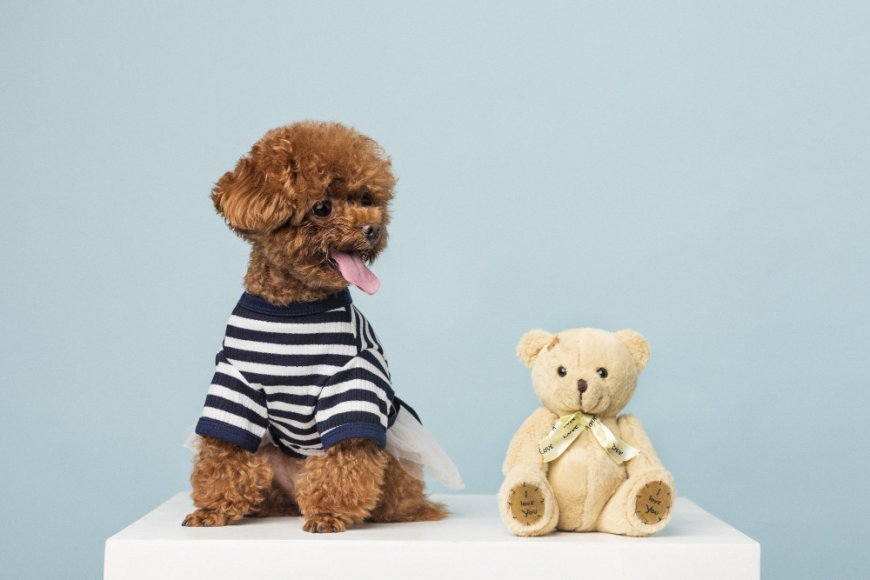Why Regular Pet Grooming Is Essential for Your Pet’s Health

Pet grooming is not just about maintaining a clean and presentable appearance for your cat or dog. Regular grooming is an essential part of keeping your pet healthy and happy. Grooming sessions go beyond just brushing fur; they can detect health issues early, prevent discomfort, and ensure your pet’s overall well-being. Whether it's cat grooming or dog grooming, a routine grooming schedule offers numerous health benefits for pets of all breeds and ages.
The Importance of Regular Pet Grooming
Preventing Skin Issues
One of the most significant health benefits of regular pet grooming is its role in preventing skin issues. Mats and tangles in your pet's fur can cause discomfort, pain, and even skin infections if left untreated. Regular grooming helps remove loose fur and prevent mats from forming, especially in long-haired breeds.
For both cats and dogs, mats can pull at the skin, causing irritation and inflammation. In some cases, the skin underneath a mat can become infected, leading to more severe health problems. Regular brushing keeps your pet's coat clean, shiny, and free of these harmful mats.
Reducing Shedding
Shedding is a natural process for pets, but excessive shedding can be a sign of poor health or improper grooming habits. Regular dog grooming and cat grooming can significantly reduce shedding, keeping your home cleaner and your pet more comfortable.
By brushing your pet regularly, you remove loose fur that would otherwise end up on your furniture and floors. Additionally, it helps distribute natural oils in your pet's skin, promoting a healthier coat and reducing overall shedding.
Early Detection of Health Issues
Another critical aspect of routine pet grooming is that it provides an opportunity to spot potential health problems early. During grooming, you can check for lumps, bumps, parasites, or abnormalities in your pet’s skin, ears, eyes, and paws.
Groomers, whether at a pet day care or a professional grooming salon, are trained to notice subtle changes in your pet’s condition. Early detection of issues such as ear infections, skin rashes, or dental problems can lead to prompt treatment and prevent more serious health concerns down the line.
Keeping Nails Trimmed
Nail trimming is an essential part of pet grooming that is often overlooked. Overgrown nails can cause discomfort and pain for your pet. They can lead to difficulty walking, joint problems, and even injury.
Regular nail trims prevent nails from becoming too long and help your pet maintain proper posture and movement. For dogs, long nails can dig into their paws, leading to infections or sores. Cats, too, benefit from regular nail trims to avoid snagging and breaking their nails, which can cause bleeding and pain.
Promoting Good Dental Health
Dental health is another vital aspect of your pet’s overall well-being, and grooming plays a role here as well. During dog grooming and cat grooming sessions, a groomer may clean your pet’s teeth or at least inspect their oral health.
Neglecting your pet’s dental hygiene can lead to tartar buildup, gum disease, and eventually, tooth loss. Worse, untreated dental issues can lead to infections that may spread to vital organs like the heart or kidneys. Regular grooming ensures that any signs of dental issues are addressed early, keeping your pet’s mouth healthy and free of disease.
Pet Grooming for Different Types of Pets
Cat Grooming
Cats are known for grooming themselves, but that doesn’t mean they don’t need professional grooming help. Regular cat grooming includes brushing, trimming nails, cleaning ears, and sometimes even bathing. Long-haired cats, in particular, are prone to matting and may need more frequent grooming than short-haired breeds.
Cats are generally sensitive creatures, so it’s essential to make grooming a calm and positive experience. Regular brushing not only reduces shedding and hairballs but also provides an opportunity to check for any signs of illness or parasites.
Dog Grooming
Dogs, like cats, require regular grooming to stay healthy. Dog grooming routines may vary depending on the breed, age, and activity level of your dog. For instance, long-haired breeds like Golden Retrievers or Poodles may need grooming more frequently to prevent mats and tangles, while short-haired breeds may not need as much attention.
During a dog grooming session, your pet will typically be bathed, brushed, have their nails trimmed, ears cleaned, and possibly have their fur trimmed or styled. This process ensures that your dog stays clean and comfortable, with reduced risks of skin infections, overgrown nails, or ear problems.
The Role of Pet Day Care in Grooming
If you are a busy pet owner, pet day care centers can be a great help in maintaining your pet’s grooming needs. Many pet day care facilities offer grooming services as part of their packages. When you drop off your dog or cat for the day, you can arrange for them to be bathed, brushed, and checked over by professional groomers.
Pet day care facilities often have experienced staff who are trained to handle grooming, so your pet will be in good hands. This ensures your pet’s grooming is taken care of even when you have a busy schedule, contributing to their overall health and happiness.
Grooming as a Bonding Experience
Grooming doesn’t just benefit your pet’s physical health; it also provides an excellent opportunity for bonding. Regular grooming sessions allow you to spend quality time with your pet, strengthening the bond between you and your furry friend.
Brushing your pet’s fur, massaging their skin, and talking to them during grooming helps to build trust and reduce anxiety. Many pets, especially dogs, enjoy the attention and care they receive during grooming sessions, making them feel more secure and loved.
Choosing the Right Grooming Products
Not all grooming products are created equal, and using the right tools and products is crucial for your pet’s health. Shampoos, conditioners, brushes, and clippers should be chosen based on your pet’s coat type and skin sensitivity.
For example, dogs with sensitive skin may require hypoallergenic shampoos, while long-haired cats need brushes designed to detangle their fur without causing pain. Consulting with a professional groomer or veterinarian can help you select the best products for your pet.
How Often Should You Groom Your Pet?
The frequency of grooming depends on your pet's breed, age, and lifestyle. Long-haired dogs and cats typically require grooming every 4-6 weeks, while short-haired breeds may need grooming every 8-12 weeks. However, regular brushing at home should be done more frequently—daily or weekly, depending on your pet's coat.
Pets with more active lifestyles, such as those who spend a lot of time outdoors, may need more frequent grooming to remove dirt and debris. Similarly, older pets may require more frequent grooming as their fur and nails may grow faster, and they may struggle to groom themselves.
Conclusion
Incorporating regular pet grooming into your pet’s routine is essential for their health and happiness. From reducing shedding to preventing skin issues, regular grooming sessions keep your pet clean, comfortable, and healthy. Whether you take your pet to a pet day care or do it at home, grooming should never be overlooked. It’s not just about aesthetics; it’s about ensuring your pet’s long-term well-being.
By keeping up with cat grooming, dog grooming, and using professional grooming services when necessary, you can ensure that your furry friend remains in the best of health.
What's Your Reaction?
 Like
0
Like
0
 Dislike
0
Dislike
0
 Love
0
Love
0
 Funny
0
Funny
0
 Angry
0
Angry
0
 Sad
0
Sad
0
 Wow
0
Wow
0




















































